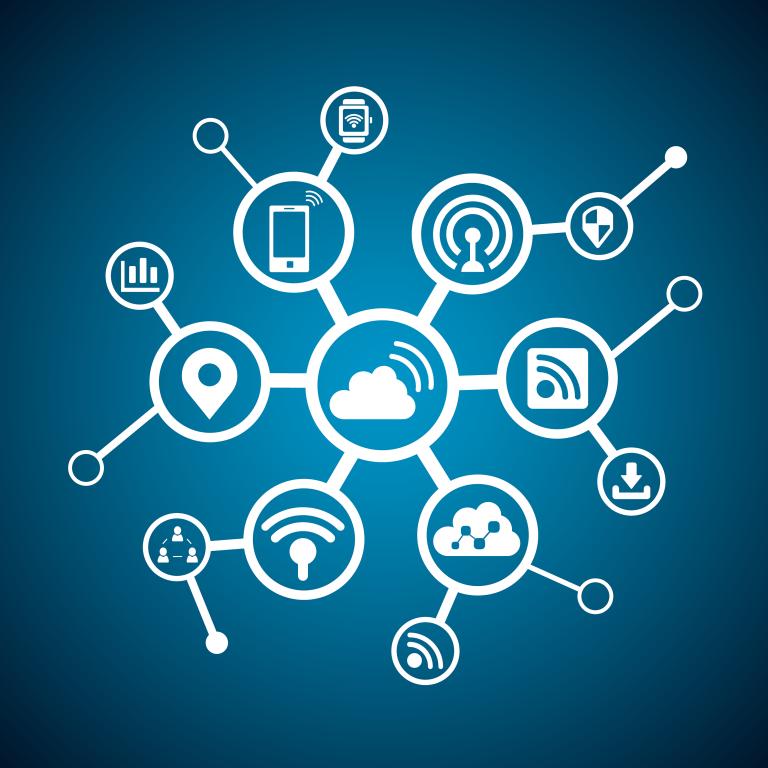
Sensors and controls—and by extension, sensor and control research—have been integral to ORNL accomplishments since the lab’s inception nearly 75 years ago. Sensors and controls, which have been called the nervous system of nuclear power plants, were essential to support ORNL’s 13 research reactors, built over the lab’s first 30 years. The Electrical and Electronics Systems Research (EESR) Division is continuing this important work through collaborations with scientists across the lab in support of the latest scientific and technological advances.
Today, EESR’s main focuses are electronics (from micro- to large-scale power electronics systems), communications (networks, wireless, cell towers, Bluetooth, and satellites to enable devices and instruments to communicate with one another and with users), sensors (from computer chips to large commercially available devices that are being used in unique ways), and controls (measurement tools to enhance understanding and control of a system or process).
Much of what EESR does is somewhat behind the scenes at ORNL. We don’t make the major products that you see but rather develop the electronics that help those products operate. For example, EESR staff members didn’t build ORNL’s 3D-printed Shelby Cobra, but we made the car’s electric drivetrain, inverters, and battery management system. We also didn’t build ORNL’s Additive Manufacturing Integrated Energy demonstration project’s 3D-printed house and utility vehicle, but we produced the electronics system for wireless power transfer between the house and vehicle and the mechanism connecting the house to the electric grid. These groundbreaking projects required electronics, sensors, and controls at all levels.
We are also working in the arenas of isotopes technology and national security. Another focus is smart manufacturing—use of sensors and measurement to provide connectivity across a range of manufacturing equipment and processes. We’re developing enterprise data management systems that work within a company or factory so information can be gathered effectively, avoiding a “Tower of Babel” scenario among various devices, machines, and equipment. If those devices, machines, and equipment are able to communicate with one another—or “talk” the same language—industry can gain better control of the manufacturing process, resulting in greater efficiency and increased cost-effectiveness.
We’re also collaborating with our colleagues in the Biosciences and Environmental Sciences Divisions to develop new capabilities for monitoring the environment. Their efforts result in the generation of large amounts of data in locations sometimes far removed from ORNL (such as northern Minnesota; Barrow, Alaska; and Puerto Rico). Because of technology limitations, researchers at remote locations must gather data in person and bring it back to ORNL for analysis. EESR is working on ways to gather the data automatically and transfer it back to ORNL via the Internet. This would allow for more immediate analysis for researchers in the field and for automated data collection when extreme weather or other factors prevent field research.
Much of our recent research is tied to the Internet of Things (IoT) and involves close collaboration with colleagues in the Computational Sciences and Engineering Division (CSED) of the Computing and Computational Sciences Directorate. IoT refers to an aspect of the Internet that has been around for a while—computer networks, Ethernet, Wi-Fi, and similar systems that are used to connect not only computers but also mobile phones; vehicles; home appliances; commercial heating, ventilation, and air conditioning systems; manufacturing equipment; and other “things” that we interact with daily. It represents the idea of using layers of technology required for processing information—sensors, embedded computing, communications protocols, the cloud, and analytics—to make predictions, achieve efficiencies, and save time in the delivery of services, the use of energy, and the security of our infrastructure.
You can see IoT in action in unmanned aerial vehicles (UAVs), or drones. Although there are recognized safety and security issues, UAVs are nevertheless poised to provide us with a great deal of valuable information. ORNL has an Unmanned Aerial Systems Research Center, a joint project of EESR and CSED, to investigate ways to use drones to make sensors mobile and to maintain secure communication with drones. Potential applications include agricultural crop modeling and yield prediction, inspection of our electricity grid infrastructure, and surveys of damage caused by natural and manmade disasters.
The work we do in EESR is at the heart of IoT—but so are communications, control, and electronics—things we in EESR know quite a bit about. We are using that knowledge, in partnership with other ORNL divisions, to address the issues related to IoT, including developing new ways to manage large amounts of data, use cloud computing, and perform detailed analytics.

